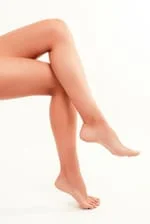Psoriasis

Psoriasis is a group of chronic skin disorders that cause itching and/or burning, scaling and crusting of the skin. Over seven million men and women in the U.S. of all ages have some form of psoriasis, which may be mild, moderate or severe. The most commonly affected areas are the scalp, elbows, knees, hands, feet, and genitals.
Psoriasis cannot be cured but it can be treated successfully, sometimes for months or years at a time and occasionally even permanently. Treatment depends on the type, severity, and location of psoriasis. The patient’s age, medical history, and lifestyle may also have a significant impact on the methods utilized. The most common treatments are topical medications, phototherapy, photochemotherapy (PUVA), and oral or injectable medication (for severe symptoms).
Rashes
A rash is a change in the skin’s color or texture. Simple rashes are called dermatitis, which means the skin is inflamed or swollen. Contact dermatitis is caused by touching an irritating substance such as clothing materials and dyes, latex, cosmetics, soaps or certain plants like poison ivy. Seborrheic dermatitis forms red patches and scaling, usually on the face and head, where it is more commonly known as dandruff or cradle cap. Other common rashes include eczema, psoriasis, impetigo, shingles, chicken pox, measles, scarlet fever, insect bites and those caused by medical conditions such as lupus or rheumatoid arthritis.
A dermatologist is usually able to identify the rash by looking at it and asking about accompanying symptoms. Mild rashes can often be treated with simple home care practices such as avoiding soaps and bathing in warm water. Others may require moisturizing creams, prescription medications or more extensive treatment.
Nail Conditions

There are several different diseases that affect the nails, often as a result of a fungal or bacterial infection. Ingrown toenails are the most common nail ailment, involving the corners of the nails digging into the surrounding soft tissue, causing irritation and swelling. Fungal infection commonly affects the toenails (and sometimes the fingernails as well), as a result of exposure to a warm, moist environment, and cause thick, brittle and distorted nails.
Treatment for nail diseases may include oral or topical medications. The nail may need to be removed for severe infections. Patients can prevent nail conditions from developing by keeping the feet clean and dry, wearing shoes that fit well and clipping toenails straight across.
Hair Loss (Alopecia)
Alopecia, or hair loss, is a common condition caused by a number of reasons. Hair loss can be natural, a side effect of medication or signs of another health condition. It can result in total baldness, patchy bald spots or thinning of the hair, and may be confined to the scalp or affect other areas of the body. Some of the causes of alopecia include:
- Male pattern baldness
- Fungal infection of the scalp
- Trichotillomania (mental disorder that causes a person to pull out his or her own hair)
- Thyroid disorders
- Chemotherapy
Treatment for hair loss is usually based on the cause but can include completion of chemotherapy, treating infections, drug therapy like Rogaine and Proscar or hair transplant plugs.
Melasma

Melasma is a common skin condition where patches of skin on the face turn brown. The most commonly affected areas are the cheeks, bridge of the nose, forehead and upper lip. Melasma mostly affects women. Causes include exposure to ultraviolet light and hormonal changes resulting from pregnancy or birth control.
Treatments for melasma include:
- UVA/UVB Sunscreen of SPF 30 or higher
- Sunblock Lotions
- Avoidance of Any Irritating Cleansers, Creams or Makeup Products
- Discontinuation of Birth Control
- Bleaching Creams including Hydroquinone
- Glycolic Acid Peels
Treatment by a dermatologist often improves the appearance of melasma and prevents future recurrence.
Molluscum
Molluscum contagiosum is a chronic skin infection caused by a virus. It’s quite common among children, and is usually spread by touching an affected area on a person infected with the virus. The virus can also be transmitted through sexual contact. Molluscum causes painless, raised papules or nodules on the skin that look like pink pearls. They appear most often on the face, neck, arms, hands and chest, although they may appear nearly anywhere on the body, including the groin. The growths are often indented in the center and have a firm, waxy core. Scratching can spread the infection, leading to lines or clusters of lesions on the skin.
Patients with healthy immune systems generally find that molluscum contagiosum clears on its own within six to 18 months. Patients should try not to scratch the papules, or else they risk scarring and bacterial infection. If necessary, a dermatologist can remove individual lesions.
Pediatric Conditions
Pediatric dermatology involves comprehensive diagnosis and treatment services for the unique skin of infants, children and adolescents. While children and adults experience many of the same skin conditions, certain conditions are more prevalent in younger patients and require special care that takes into account the growing needs of these patients.
Our treatments are gentle yet successful, allowing children to engage in their everyday activities while efficiently managing their skin ailment. Children with healthy skin can also be seen by our doctors for regular examinations to learn about proper skin care, including adequate sun protection. Early examination by a dermatologist can promote a lifetime of healthy skin for our pediatric patients.
Some of the most common pediatric skin conditions treated by our doctors include:
